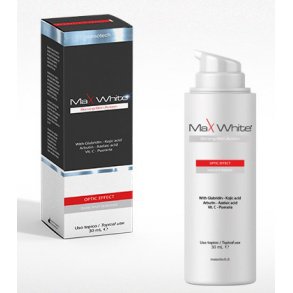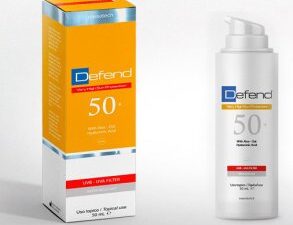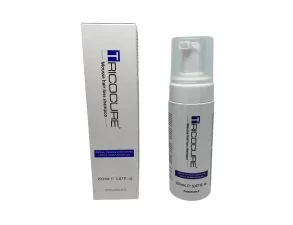Description
Max White
Optical Effect
MELANOGENESIS AND DISEASE SKIN COLOR The color of the skin is the result of the presence of various pigments.
The hemoglobin in the red blood cells, the carotene which is primarily found in the adipocytes. The pigment that affects the color of the skin the most is melanin, which is produced by specialized cells in the epidermis and is called melanocytes. Melanin regulates skin color via a complex mechanism. Morbid skin color is changes in skin color caused by too much melanin or in some cases, deposition of other pigments in the epidermis. This change may be in specific areas of the body or more prevalent. The discolorations or spots on the skin are not all the same, each of them has a different origin and depthMAX WHITE Max White is the most intense, effective and innovative treatment for hyperpigmentation, melasma, sun damage, age spots, discolorations and dark circles. It helps to reduce and prevent blemishes on the skin, face, body and hands.
Max White's formula is rich in active ingredients, and is present in high concentrations and with powerful depigmenting properties, and can form a contrast to the phenomenon, both the biological and chemical-physical nature which is the basis for the manifestation of these skin imperfections.
How is MAX WHITE used? Apply the product twice daily directly on the affected area. The product works already after the first applications.
What are the key ingredients in MAX WHITE? Glabridin : Is an isoflavonide extracted and isolated from the Glycyrrhiza glabra L. root. In vitro and in vivo studies have shown that this phytoestrogen contains a number of properties: antioxidant, anti-inflammatory, neuroprotective, antiteratogenic, antibacterial and has a depigmenting effect when applied to the skin.
The depigmenting activity of glabridin is due to a multifunctional effect on the causes leading to the manifestation of a diseased skin color.
Vitamin C : Ascorbic acid, an almost ubiquitous molecule by nature, present in many citrus fruits and green-leafed vegetables, reduces melanin production since it is able to reduce o-DOPAquinone to the former substance, DOPA, to disrupt the oxidation process that leads to the formation of melanin. This actually turns out to be more stable in relation to oxidation, thus improving the effect of the product.
Arbutin : A natural glucoside of Hydroquinone, chemically known as Hydroquinone-β-D-Glucopiranoside, the mechanism of action, however, seems different, since clinical studies on the cultivation of human melanocytes open up the possibility that it does not respond to a synthesis or to enzyme expression. Clinical studies have confirmed that its application does not cause any side effects, unlike hydroquinones.
Kojic acid : inhibits the enzyme tyrosinase, chelating copper in the active region. Clinical studies have shown that kojic acid and its esters have depigmenting properties and are considered safe and non-toxic. The inhibitory effect on melanin formation is due to both the inhibitory activity of the transcription factor associated with microphthalmia (MITF) and the inhibition of the hormone-stimulating alpha-melanocyte activity (alpha-MSH)Azelaic acid : The bleaching properties of azelaic acid are due to the competitive tyrosine inhibitory effect.
Niacinamide: Is the biologically active amide of vitamin B3. Studies have shown that nicacinamide combined with adequate sun protection can provide better clarity compared to the use of sun protection alone.
Vitamin A : Retinoic acid also has a depigmenting effect and can have a brightening effect when applied to the skin. The mechanism of action, which, however, is not completely clarified, is on the one hand associated with an increased cell replacement of keratinocytes, thus facilitating pigment loss from the epidermis. On the other hand, it has an indirect strengthening of the cytotoxic effect on melanocytes in some skin depigmentations, by inhibiting detoxification pathways (with a relative increase of toxic substances such as quinones).
Pueraria (Kudzu) : The root and flower used in traditional medicine have different medicinal properties. Numerous studies we have the activity of this plant extract in relation to melanogenesis. The activity in suppressing melanogenesis is confirmed visually by the staining of fontana masson.Brassica Napus Seeds Extract : Rich in Antioxidants. In vitro and in vivo studies have shown that the active ingredient is able to respond to signs of aging, reduce discoloration of the skin and a uniform skin color





Reviews
There are no reviews yet.